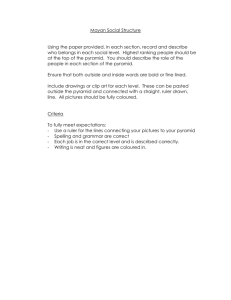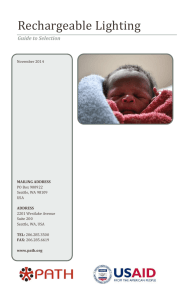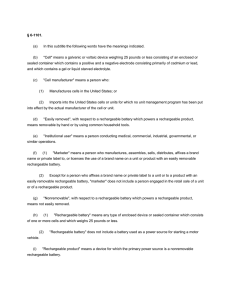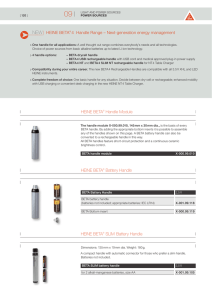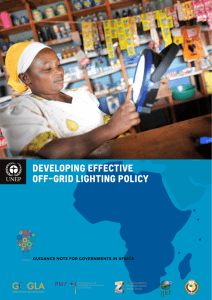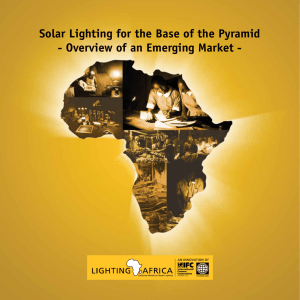Revenue Models for Off-Grid Energy Access at the Bottom of... Globally, one in every five people does not have access...
advertisement
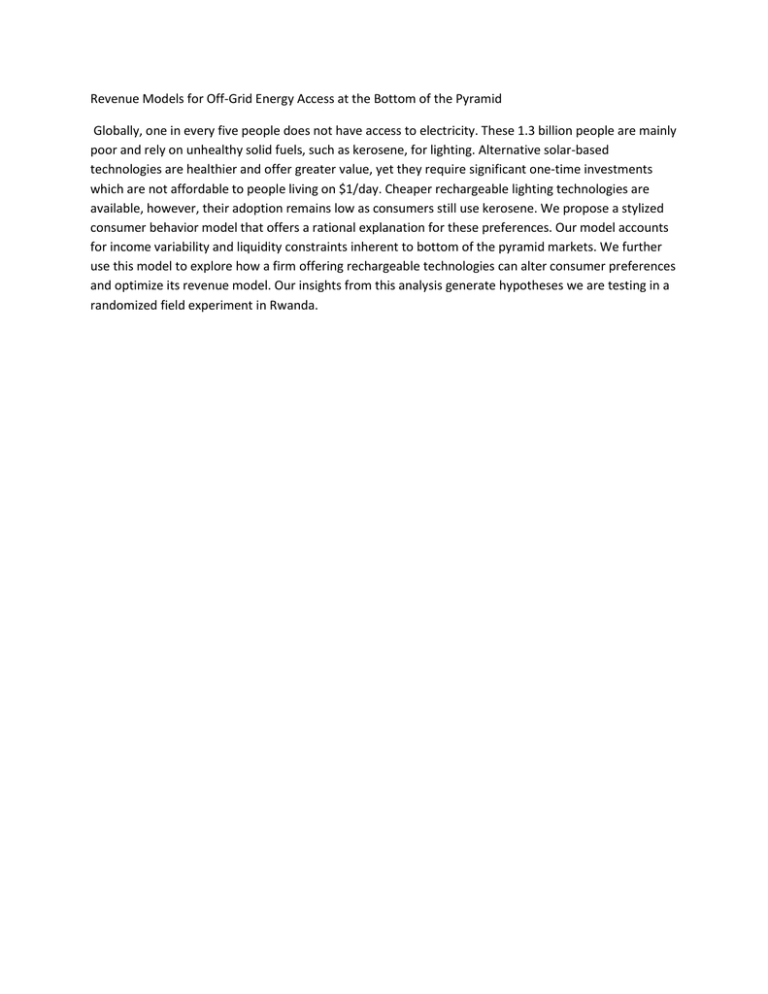
Revenue Models for Off-Grid Energy Access at the Bottom of the Pyramid Globally, one in every five people does not have access to electricity. These 1.3 billion people are mainly poor and rely on unhealthy solid fuels, such as kerosene, for lighting. Alternative solar-based technologies are healthier and offer greater value, yet they require significant one-time investments which are not affordable to people living on $1/day. Cheaper rechargeable lighting technologies are available, however, their adoption remains low as consumers still use kerosene. We propose a stylized consumer behavior model that offers a rational explanation for these preferences. Our model accounts for income variability and liquidity constraints inherent to bottom of the pyramid markets. We further use this model to explore how a firm offering rechargeable technologies can alter consumer preferences and optimize its revenue model. Our insights from this analysis generate hypotheses we are testing in a randomized field experiment in Rwanda.

